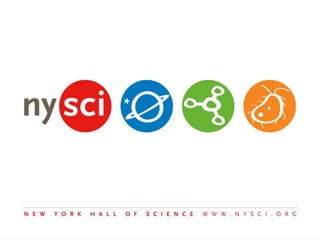
President's report 3_16_11
- 3. Circus — June 4, 2011 Body text is always Verdana reg. 16 point Please do not change color, font or style Body text is always Verdana reg. 16 point Please do not change color, font or style Body text is always Verdana reg. 16 point Please do not change color, font or style
- 4. Maker Faire —September 17 and 18, 2011
- 5. Wild Minds—October 1, 2011
- 7. Teachers TryscienceNYSCI & IBM Collaborative Website for Design-Based STEM Learning
- 8. Teachers Tryscience Environmental engineering, design-based lessons for middle school Teacher-contributed lessons and materials Linked to standards Resources for design-based and inquiry-based teaching and learning Groups for teacher collaboration, communication and sharing
- 10. TEACH: Environmental Engineering Lesson Plans
- 15. Big Idea Recently discovered (shared) cognitive abilities that have evolved in non-human animals show the connections between us. These include: concept formation representation of space, time and number numbers and pattern recognition tool use building and making communication self-awareness, self-abstraction, empathy and deception creativity and play.
- 16. Wild Minds —What Animals Really Think It is a 1,600 sq ft traveling exhibition which opens in New York in October, 2011 Partners in the projects and future venues include: Oregon Zoo and Oregon Museum of Science and Industry Columbus Zoo and Columbus Center of Science and Industry Fort Wayne Children’s Zoo and Science Central Santa Barbara Zoo and California Science Center and our partner is the Staten Island Zoo The science center partner will host the traveling exhibition and will coordinate programs with the zoo. The zoo’s will have signage, talks, demonstrations and one exhibit about animal cognition.